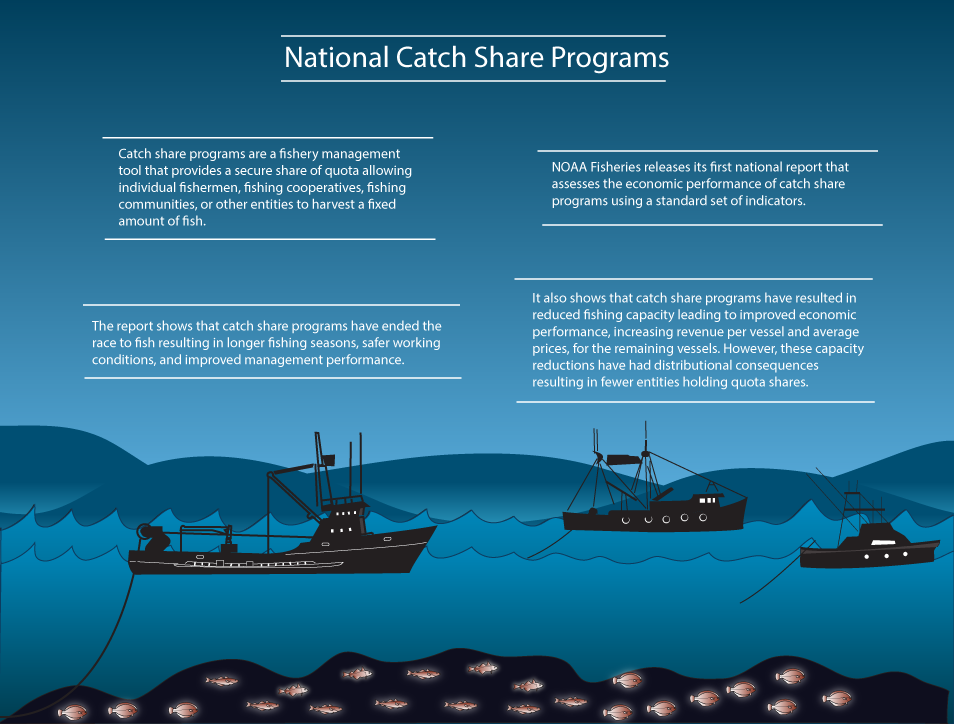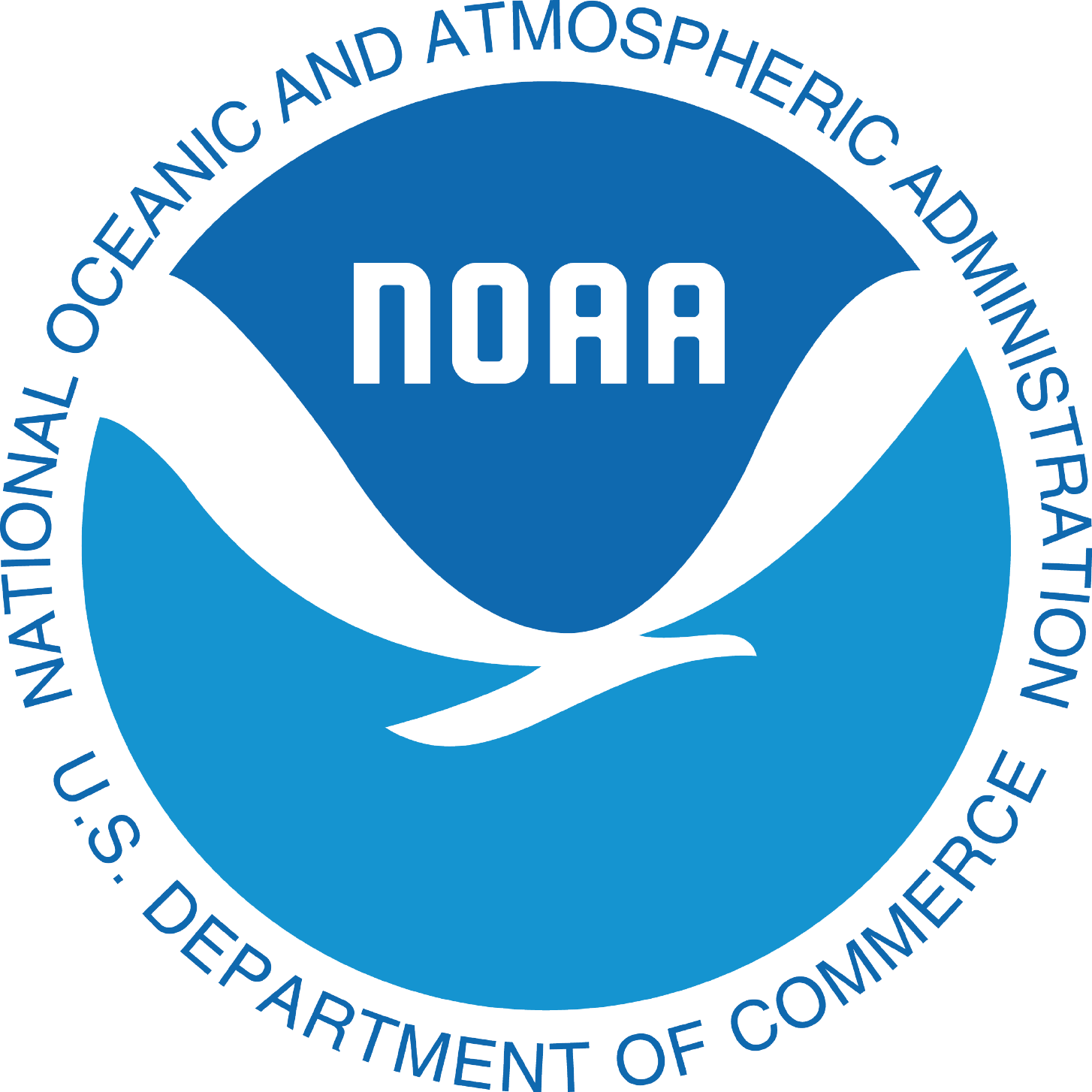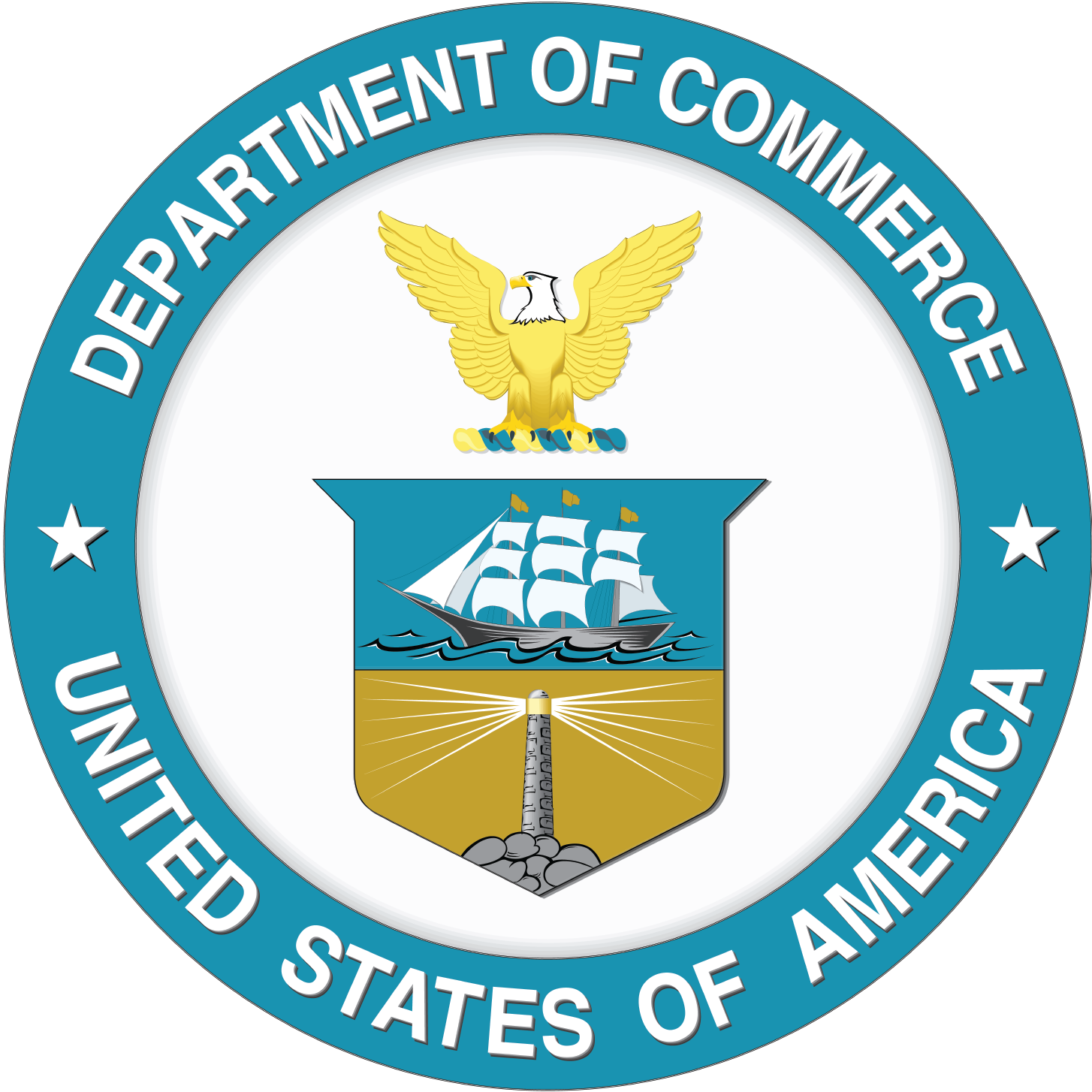- Home
- Habitat
- Commercial Fisheries
- Recreational Fisheries
- Saltwater Angler Attitudes and Preferences Study
- Angler Expenditures & Economic Impacts
- Angler Expenditure Survey Instruments
- Saltwater Angling Valuation Studies
- Stated Preference Survey Instruments
- Revealed Preference Survey Instruments
- For Hire Studies
- For Hire Survey Instruments
- NOAA Fisheries Recreational Fisheries Economic Publications
- MPA
- Protected Species
- Tools
- Publications
U.S. Catch Share Programs Background
"Catch shares" are a fisheries management tool that dedicates a secure share of quota. This allows individual fishermen, fishing cooperatives, fishing communities, or other entities to harvest a fixed amount of fish. With clearly defined fishing privileges, fishermen no longer need to "race to fish". Instead, they can make harvest decisions based upon market conditions, improving economic performance, and weather conditions. This improves crew safety. These incentives can reduce the cost of taking conservation actions. They can also encourage individual fishing choices that are more consistent with sustainable fishing practices such as reducing back low-value or undersized catch, which is frequently associated with high mortality rates. The ability to align fishermen’s economic incentives with the long-term biological health of the fishery singularly distinguishes catch share programs from traditional fishery management strategies (i.e., trip limits, gear restrictions, etc.).
U.S. Catch Share Programs
The first U.S. Catch Share Program, the Mid-Atlantic Surfclam and Ocean Quahog Individual Transferable Quota Program, was implemented in 1990. Nationwide, there are currently 15 Catch Share Programs currently in operation and managed by six different regional fishery management councils.
Governance: Section 303A of the Reauthorized MSA has provisions for limited access privilege programs. More generally, the NOAA Catch Share Policy (Policy), effective November 2010, provides guidance and best practices for regional fishery management councils to use when considering catch shares as a fishery management tool. The Policy was developed using input from each Regional Fishery Management Council, commercial and recreational stakeholders, environmental groups and thousands of public comments. The Policy specifically notes that while catch share programs may not be appropriate for all fisheries, when they are well-designed, they can help provide incentives for ecological sustainability for fishery resources and achieve economic sustainability for fishing communities.
General Principles of Catch Share Programs
- Identify management goals and timeframe
- Ensure fair and equitable allocation
- Promote flexibility and access via transferability of shares
- Promote fishing community sustainability
- Reduce costs to fisheries and consider royalty provisions
The Economic Performance of U.S. Catch Share Programs
It has been difficult to systematically measure the economic performance of catch share programs because the programs are so diverse in terms of target species, location, size, duration, management objectives, program design features, etc. However, experts from NOAA Fisheries – including fishery economists, anthropologists, policy analysts, and resource managers – took on this challenge and developed an initial set of standard performance indicators that measure the economic performance of catch share programs, regardless of their design.
The approach adopted in this report was to compare a “baseline,” which includes the three-year average prior to implementing catch shares, for each indicator to its performance following implementation. Metrics included in the report cover six areas:
- management context (whether quota increased);
- management performance (whether quota was exceeded and whether season length increased);
- economic benefits (whether landings revenue increased, whether quota utilization increased and whether average prices increased);
- economic efficiency (whether revenue per vessel increased);
- capacity (whether the number of fishing vessels decreased); and
- distributional effects, which are measured in terms of whether the number of shareholders increased or decreased.
The report shows that existing catch share programs have ended the race to fish (in their respective fisheries) resulting in longer fishing seasons, safer working conditions, and improved management performance. The report also shows that existing catch share programs have resulted in reduced fishing capacity to better match stock size, which was identified by Fishery Management Councils as a management objective in the majority of catch share programs evaluated. Economic performance for the vessels remaining in the program improved, as measured by such metrics as revenue per vessel and average price.
NOAA Fisheries’ goal is to achieve long-term ecological and economic sustainability of the Nation’s fishery resources and fishing communities. There are many tools for accomplishing that goal including catch share programs. The performance indicators developed for this report will help fishery managers track catch share program performance and gauge whether a program is meeting its goals and objectives.
To read the full report, click here. A companion report on non-catch share commercial fisheries is also available.
Economic Performance of Catch Share Programs
Full ReportExecutive Summary






